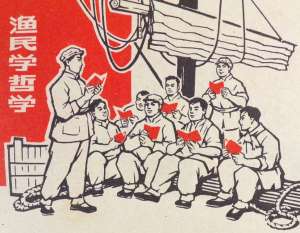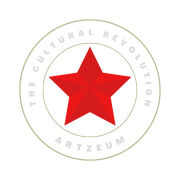Insights
Listen to Secretary of State Shultz discussing his China approach. (02:18 in length)
Our heartfelt wishes that this website will be a catalyst for recognizing the difference in worldviews and approaches between the US and China.
When seeking the best methods, the most effective ways to interact, perhaps we should consider Secretary of State Shultz’s experience and wisdom. (video on the left.)
While considering Zhou Enlai, when speaking to a diverse delegation of foreign dignitaries in 1955, who said, 求同存异 “Focus on the similarities and save the differences.”
We are at a precarious place in our present political state of mind in the US. Let’s proceed wisely so that we do not slip as some countries before have.
Q & A Section
The Cultural Revolution, formally the Great Proletarian Cultural Revolution, was a violent sociopolitical purge movement in China from 1966 until 1976. Launched by Mao Zedong, Chairman of the Communist Party of China (CPC), its stated goal was to preserve Chinese communism by purging remnants of capitalist and traditional elements from Chinese society, and to re-impose Mao Zedong Thought (known outside China as Maoism) as the dominant ideology in the CPC.
The Revolution marked Mao’s return to the central position of power in China after a period of less radical leadership to recover from the failures of the Great Leap Forward, which contributed to the Great Chinese Famine only five years prior.
Source Wikipedia
No. The Chinese people do not blame Mao Zedong, nor do they blame him for the Cultural Revolution. Mao was highly respected for his writing and poetry, he was also famous for his calligraphy.
Mao communicated well with the peasant classes because he grew up amongst them and they respected him. Even today, the Chinese hold no animosity toward Mao.
Continue reading “What was the “Gang of Four?”
Lin Biao (December 5, 1907 – September 13, 1971) was a Marshal of the People’s Republic of China who was pivotal in the Communist victory in the Chinese Civil War, especially in Northeast China. Lin was the general who commanded the decisive Liaoshen and Pingjin Campaigns, in which he co-led the Manchurian Field Army to victory and led the People’s Liberation Army into Beijing.
Lin died on September 13, 1971, when a Hawker Siddeley Trident he was aboard crashed in Öndörkhaan in Mongolia. The exact events of this “Lin Biao incident” have been a source of speculation ever since. The Chinese government’s official explanation is that Lin and his family attempted to flee following a botched coup against Mao. Others have argued that they fled out of fear they would be purged, as Lin’s relationship with other Communist Party leaders had soured in the final few years of his life. Following Lin’s death, he was officially condemned as a traitor by the Communist Party. Since the late 1970s, Lin and Mao’s wife Jiang Qing (along with the other members of the Gang of Four) have been labeled the two major “counter-revolutionary forces” of the Cultural Revolution, receiving official blame from the Chinese government for the worst excesses of that period.
Source Wikipedia.
Sensing political opposition in his own party, Mao reached beyond it, to people previously not active in politics, for allies. He tapped into widespread grievance among peasants and workers who felt that the Chinese Revolution was not working out for them. In particular, the Red Guards gave Mao a way of bypassing the Party and securing the personal fealty of the fervent rank and file. As the newly empowered students formed ad-hoc organizations, and assaulted institutions and figures of authority, Mao proclaimed that “to rebel is justified,” and that students should not hesitate to “bombard the headquarters.” In 1966, he frequently appeared in Tiananmen Square, wearing a red armband, with hundreds of thousands of Red Guards waving flags and books. Many of his fans avoided washing their hands after shaking his. Mao’s own hands were once so damaged by all the pressing of callow flesh that he was unable to write for days afterward. Predictably, though, he soon lost control of the world he had turned upside down.
In 1962, someone formally put forward the idea of “writing about middle characters.”
What sort of people after all are the so-called middle characters?”
According to the advocate of this theory, they are people from among the masses, and especially the peasant masses, who are a midway between good and bad, the positive and the negative, the advance and the backward, people tainted by the “old things”—“the mental burden which has weighed down on the individual peasant for thousands of years.”
(From a translation of the article “Writing about Middle Characters—A Bourgeois Literary Notion,” Wenyi Bao, September 30, 1964)

The Cultural Revolution lasted for ten years. It is commonly referred to as “a wasted ten years.” It started in 1966 and lasted until 1976.
The militant role of writers and artists. At a Federation of Literary and Art Circles held in Beijing in May of 1963, Premier Zhou Enlai called on the nation’s (China) writers and artists to be revolutionary writers and artists and take an active part in the class struggle both at home and abroad. ‘“Writers and artists,” he said, “should take a firm proletarian stand and have high revolutionary ideals. The should steel and remould themselves in the long and complex class struggles which had to be wages; they should strengthen themselves in proletarian ideology and in the proletarian style of work so as to be able to stand all tests of storm and stress which they might be called up on to meet.” He called upon them to devote all their efforts to strengthening the revolutionary literary and art front.
(Excerpt from “National Conference of Writers and Artists,” Peking Review, No. 22, 1963.)
The Gang of Four was a political faction composed of four Chinese Communist Party officials. They came to prominence during the Cultural Revolution (1966–76) and were later charged with a series of treasonous crimes. The gang’s leading figure was Jiang Qing (Mao Zedong’s last wife). The other members were Zhang Chunqiao, Yao Wenyuan, and Wang Hongwen.
The Gang of Four controlled the power organs of the Communist Party of China through the later stages of the Cultural Revolution, although it remains unclear which major decisions were made by Mao Zedong and carried out by the Gang, and which were the result of the Gang of Four’s own planning.
The Gang of Four, together with general Lin Biao who died in 1971, were labeled the two major “counter-revolutionary forces” of the Cultural Revolution and officially blamed by the Chinese government for the worst excesses of the societal chaos that ensued during the ten years of turmoil. Their downfall on October 6, 1976, a mere month after Mao’s death, brought about major celebrations on the streets of Beijing and marked the end of a turbulent political era in China.
Source Wikipedia
Reform of Peking (Beijing) Opera. From an article in the Hong Qi, no. 12, 1964 entitled, “A Great Revolution on the Cultural Front.”
The reform of Peking opera is a major event. It is not only a cultural revolution but also a social revolution. The reform which began with the 1964 festival of revolutionary Peking opera on contemporary themes held in Peking and the further revolutionary measures that (will follow) in drama, Chü I (曲艺), film, literature, music, dancing, fine arts, and other literary and art fields, are an important component of China’s socialist revolution in the field of culture and ideology.
Service the workers, peasants and soldiers is a direction from which we will never swerve.
(Source: The Great Cultural Revolution In China, China Sourcebook Series, Asia Research Centre, Hong Kong 1967)
The removal of the Gang of Four from power is sometimes considered to have marked the end of the Cultural Revolution, which had been launched by Mao in 1966 as part of his power struggle with leaders such as Liu Shaoqi, Deng Xiaoping and Peng Zhen. Mao placed his wife Jiang Qing, a former film actress who before 1966 had not taken a public political role, in charge of the country’s cultural apparatus. Zhang, Yao and Wang were party leaders in Shanghai who had played leading roles in securing that city for Mao during the Cultural Revolution.
Around the time of the death of Lin Biao in 1971, the Cultural Revolution began to lose momentum. The new commanders of the People’s Liberation Army demanded that order be restored in light of the dangerous situation along the border with the Soviet Union. Premier Zhou Enlai, who had accepted the Cultural Revolution, but never fully supported it, regained his authority and used it to bring Deng Xiaoping back into the Party leadership at the 10th Party Congress in 1973. Liu Shaoqi had meanwhile died in prison in 1969.
Near the end of Mao’s life, a power struggle occurred between the Gang of Four and the alliance of Deng Xiaoping, Zhou Enlai, and Ye Jianying.
In 1981, the four deposed leaders were subjected to a show trial and convicted of anti-party activities. During the trial, Jiang Qing in particular was extremely defiant, protesting loudly and bursting into tears at some points. She was the only member of the Gang of Four who bothered to argue on her behalf. The defence’s argument was that she obeyed the orders of Chairman Mao Zedong at all times. Zhang Chunqiao refused to admit any wrongdoing. Yao Wenyuan and Wang Hongwen expressed repentance and confessed their alleged crimes.
The prosecution separated political errors from actual crimes. Among the latter were the usurpation of state power and party leadership; the persecution of some 750,000 people, 34,375 of whom died during the period 1966–1976. The official records of the trial have not yet been released.
Jiang Qing and Zhang Chunqiao received death sentences that were later commuted to life imprisonment, while Wang Hongwen and Yao Wenyuan were given life and twenty years in prison, respectively. All members of the Gang of Four have since died; Jiang Qing committed suicide in 1991, Wang Hongwen died in 1992, and Yao Wenyuan and Zhang Chunqiao died in 2005, having been released from prison in 1996 and 1998, respectively.
Source Wikipedia

Links of Interest
What Are the Cultural Revolution’s Lessons for Our Current Moment?
By Pankaj Mishra
The great question of China’s Maoist experiment now looms over the United States: Why did a powerful society suddenly start destroying itself?
The Cultural Revolution: all you need to know about China’s political convulsion
The Guardian
Fifty years ago one of the bloodiest eras in Chinese history began, in which as many as two million people died. But who started it and what was it for?
